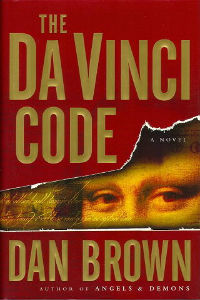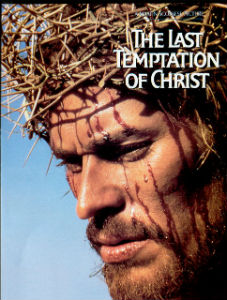Dealing With Doubt
Before he died noted lawyer Vincent Bugliosi who prosecuted Charles Manson and claimed to end the Kennedy Controversy set out to answer The God Question. A vauable book but not exactly new as this excerpt from my forthcoming book seeks to show from the history of the Worldwide Church of God.

Dan Brown’s The Da Vinci Code has been one of the bestselling blockbuster books of the 21st century. It was a fictionalized version of the origins of Christianity that ignited a “firestorm of discussion.”1 Made into a popular movie in 2006 starring film star Tom Hanks, The Da Vinci Code was a religious-type thriller built around the postulate of a love relationship between Mary Magdalene and Jesus Christ. Though most didn’t seem to notice in all the excitement, Brown was following trails blazed by the noted director Martin Scorsese’s 1988 movie The Last Temptation of Christ. Scorsese’s cinematic exploration of the man from Nazareth was based in turn on a serious novel by Nikos Kazantzakis. In this retelling, Jesus is tempted on the cross to use his “superpowers,” to escape the excruciating suffering and run off with Mary Magdalene. In turn, the movie version of The Last Temptation recalled for many Norman Jewison’s controversial 1974 movie, Jesus Christ Superstar, a remake of a 1971 Broadway rock opera by Tim Rice and Andrew Lloyd Webber.2 Before these pop culture extravaganzas, however, came a controversial best selling 1965 book by British Biblical scholar Hugh J. Schonfield titled The Passover Plot: A New Interpretation of the Life and Death of Jesus (New York: Random House, 1965).

Coming just two years after English Bishop John Robinson’s critical and loudly-trumpeted analysis of Anglicanism titled Honest to God, Schonfield’s Passover Plot “upped the ante” quite a bit. Schonfield, a serious scholar, asserted that Jesus became convinced of his role as the Jewish Messiah because of his descent from the royal bloodline of King David. Growing up, said Schonfield, Jesus noticed that many of his countrymen, chafing under Roman oppression, were expecting their Messiah to appear. According to Schonfield, Jesus planned to fake his death on the cross and then reappear as the resurrected earthly Messiah – the King of the Jews. The story drew on some biblical details – the sponge offered for his thirst was a drug to render him unconscious (Matthew 27:48); Joseph of Arimethea was his well-connected insider with enough clout to get the severely beaten Jesus off the cross before rigor mortis set in (Matthew 27:57). In Schonfield’s retelling, the plan backfired when a Roman soldier unexpectedly dispatched Jesus with a spear thrust (John 19:34). His supporters tried to rally him from this mortal thrust but to no avail. Thus, concludes The Passover Plot, the Gospel accounts of the post-resurrection appearances were made up later to keep the hopeful myth of the Messiah alive.3

Ideas similar to Schonfield’s had been extant for generations. Skepticism about the essential truths of the Gospel accounts traced back at least to the English deists of the 1600s.4 Coming in the excitable, newly-wired media culture of the 1960’s, however, Schonfield’s claims fell like sparks on dry tinder. Was Jesus divine or an imposter? The January, 1966 Plain Truth answered a letter from a reader in Gary, Indiana about the claims made by The Passover Plot. The “Short Questions” column took vigorous exception with Schonfield’s book and mounted a strong attack: “What kind of mind worked forty years to come to the conclusion that all this could have been a massive plot – the greatest trick in history” and “Who could possibly believe such a preposterous book? Probably not even its own author!”
That did it. Hugh Schonfield fired off a nasty letter to The Plain Truth.5 Herbert Armstrong felt it necessary to address the issue in the April, 1966 Plain Truth. The careful and effective apology, however, revealed a side of HWA that few except close friends and very careful readers got to see – a confident, measured tone; a calm and reasonable demeanor, a refusal to be rattled. It was not a new role for HWA. He could positively “glow all over” when he wanted to turn on the charm. Yet, coming the same year as Time magazine’s notorious “Is God Dead?” cover, it revealed just how Christ-focused and Christ-involved Herbert Armstrong was at rock bottom. HWA’s apology revealed him as the unlikely defender of Christian orthodoxy in a challenging, anti-church and indeed anti-Christian decade. Herbert Armstrong’s response to Schonfield appeared in his “Personal,” that introductory page-three slot in the magazine where he often took a more philosophical, almost detached and often insightful view of the world and its goings on.

“Lemons Into Lemonade”
“Did you ever make a mistake?” HWA began his vigorous reply, “And did you admit it? The fact is, you have done worse – you have sinned.” Very quickly the homo religiosus as popular journalist was taking control of the subject. Life’s events are once again filtered through God at work in the world and the need to bend every experience back into that framework. Herbert Armstrong continued:
A mistake may harm you, another person or persons, or cause damage to some thing. But sin is against God. And all who ever lived – excepting only the man Jesus Christ – have sinned. It now comes to my attention that I have made a mistake. The matter of first importance in life is that we confess our sins, repent, and ask forgiveness through Jesus Christ. Secondary to it is to admit our mistakes and rectify them if possible.6
HWA’s skilful and dignified framing of this issue, elevating the incident into the larger context of sin and forgiveness, was by now second nature to a public evangelist who had lived by his wits and his typewriter for 54 years. By taking the “high road,” admitting error, HWA was bringing his readers with him on one level and skillfully preparing to refute Dr. Schonfield’s thesis on another, and on still another level doing it in such tones and terms as to turn the debate into a preaching occasion. This was skillfully done. Mr. Miles and Mr. Boreman from HWA’s Des Moines Register days, had they been on hand to observe, would have approved immensely. The Plain Truth’s mistake, as HWA framed it, was one of omission not commission. He himself took the blame. He had not checked and rechecked two or three sentences that appeared in the PT copy before it reached the Composing Room stage. Neither his Executive Editor (Herman Hoeh) nor those below him had caught it either. “Nevertheless, as Editor of The Plain Truth, I am responsible for what appears in it…I say that by way of explanation. But nevertheless I am sincerely sorry that statements which Dr. Schonfield feels reflected against his personal integrity – even though his name was not mentioned – were allowed to slip into a magazine zealous of maintaining the very highest of ethical standards in every way.”
In case the point had not been made, HWA then added: “And, let me say that it is my understanding that Dr. Schonfield does have a reputation in the world as an honest, religious scholar.” Both at Ambassador College and in many Spokesman Club meetings in the churches and from the pulpit, Worldwide Church of God folk had lived by the principle behind Proverbs 15:1, “A soft answer turns away wrath, but a harsh word stirs up anger.” However, HWA, the, lifelong preacher, saw this as a prime teaching occasion. The “great turn” in the essay soon appeared. Restitution having been duly made, HWA moved quietly but effectively over to the offensive. He began by tactfully discussing the differences in approach between the Radio Church of God’s view of Jesus Christ and the conclusions reached in The Passover Plot. The apology then quickly but smoothly turned into a carefully reasoned explanation of real repentance, a message Herbert Armstrong had vociferously proclaimed for forty years. “There is nothing more important to your life for eternity than what you believe about, or whether you believe in, Jesus,” Herbert Armstrong wrote. “For, as your Bible says, ‘…there is none other name under heaven given among men whereby we must be saved’” (Acts 4:12). Then he moved to involve his readers even more directly into the discussion:
“Your potential is to enter into the very divine Family of God – to be born as a very son of God. But you have human nature, which is self-centered in vanity, selfishness and greed…You have rebelled against God and His Law. You have sinned and brought the penalty of eternal death. But Jesus of Nazareth gave His very life for you – paying the penalty for you in your stead. If you really repent – confess your sins, admit your mistakes and your sins, the living Jesus will forgive, and put within you his vital, dynamic, eternal life-imparting Holy Spirit, making you a [converted] child of God (emphasis added.)”
The “Passover Plot” controversy soon subsided. It revealed a side of Herbert Armstrong which the public rarely got to see. He was not only at his eloquent journalistic best but also reflecting the calmness of demeanor one expected from a veteran Christian CEO – dignified, measured, and reasonable. His critics often missed – did not want to see – this relentless and obvious Christ-centeredness. The wider significance for the soon-to-be one million circulation PT was that here was a religious publication in 1966 – the same year that “Is God Dead?” appeared on Time magazine’s cover – sticking up for the core essentials of the Christian faith. These the apostle Paul had explained, and Herbert Armstrong well knew, were the veracity attaching to the death, burial and resurrection of Jesus Christ (1 Corinthians 15:3-4). This was a message many of his readers, especially of an evangelical persuasion, could embrace. In effect, with The Passover Plot controversy, Herbert Armstrong showed his editorial team, showed all willing to listen, how to effectively turn adversity to advantage, how to compose as well as carry a “message to Garcia.” In a larger sense, the implications for his life story were profound: The Armstrong media offensive was getting harder to ignore.
1 Peter W. Bernstein and Annalyn Swann (eds.) “Secrets of the Da Vinci Code,” U.S. News and World Report (special edition, 2005), page 2.
2 Bernard Brandon Scott, Hollywood Dreams and Biblical Stories (Minneapolis: Fortress Press, 1994). Garner Ted Armstrong attended the stage version. “I laughed in all the wrong places,” he later joked with audiences.
3 Hugh Schonfield, The Passover Plot (New York: Random House, 1965).
4 Alister McGrath, Christian Theology: An Introduction (Cambridge: Blackwell Publishers Inc., 1997),pages 366-367.
5 Ralph Helge, personal interview, June 11, 2006. Attorney Ralph Helge headed up the WCG’s Legal Office for much of this period and actually advised against answering Dr. Schonfield.
6 Herbert Armstrong, ”Personal,” The Plain Truth (April, 1966), pages 1-2, 7-8.